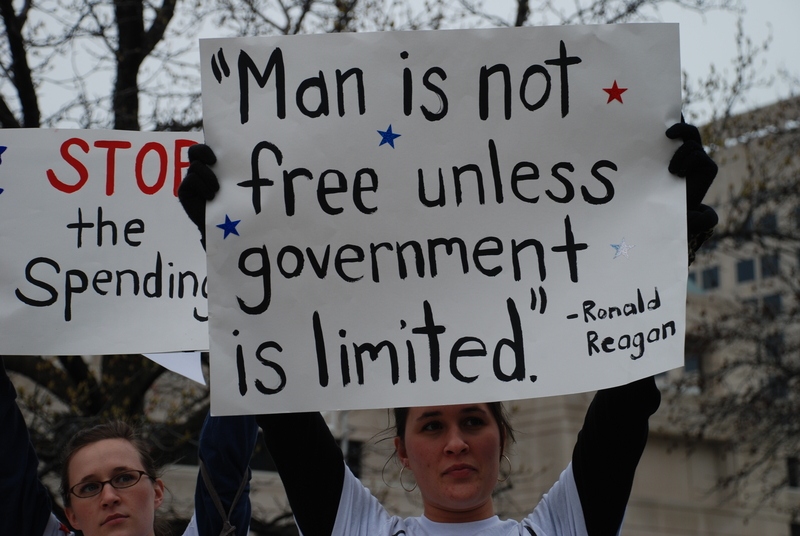
The Push for Socialism: How Kamala Harris’s Price-Fixing Policy Threatens the American Dream
The Push for Socialism: How Kamala Harris’s Price-Fixing Policy Threatens the American Dream
In recent years, there has been a growing push towards socialist policies within certain factions of American politics. Advocates argue that these measures aim to promote equality and fairness, but history has repeatedly shown that such policies often lead to economic turmoil and the erosion of individual freedoms that are central to the American Dream. A glaring example of this trend is Candidate Kamala Harris’s recently announced price-fixing policy, which poses significant risks to the nation’s economic stability and prosperity.

Understanding Price-Fixing and Its Implications
Price-fixing is an economic policy where the government sets the price of goods and services rather than allowing them to be determined by the free market. Proponents claim that this control can prevent price gouging and make essential goods more affordable. However, in practice, price-fixing disrupts the natural balance of supply and demand, leading to a host of economic problems including shortages, reduced quality of goods, and black markets.
Kamala Harris’s Price-Fixing Proposal: A Step Towards Socialism
Kamala Harris’s proposal aims to impose government-controlled pricing on various essential commodities such as healthcare services, housing, and certain food items. While the intention may be to make these necessities more accessible, the policy ignores fundamental economic principles and historical precedents that demonstrate the detrimental effects of such intervention.
1. Disruption of Supply and Demand
Reduced Incentives for Producers: When prices are artificially kept low, producers and suppliers earn less profit, diminishing their incentive to produce and supply goods. This can lead to decreased production and eventual shortages.
Overconsumption: Low prices can lead to increased demand, but if supply does not meet this demand due to reduced production incentives, it results in scarcity and rationing.
2. Quality Deterioration
Producers may cut corners to reduce costs and maintain profitability under price controls, leading to a decline in the quality of goods and services available to consumers.
3. Black Markets and Corruption
Price-fixing often gives rise to black markets where goods are sold illegally at higher prices. This underground economy can breed corruption and criminal activities, undermining the rule of law.
4. Economic Inefficiency
Government intervention in pricing distorts market signals, leading to inefficient allocation of resources and hindering economic growth and innovation.
Lessons from History: The Failure of Nixon’s Price Controls
To understand the potential consequences of Harris’s proposal, it’s instructive to look back at the last and only time widespread price controls were implemented in the United States during peacetime: the Nixon administration’s experiment in the 1970s.
1. Background of Nixon’s Price Controls
In August 1971, President Richard Nixon implemented a 90-day freeze on wages and prices in an attempt to curb inflation and stabilize the economy. This policy was later extended and modified over several phases.
2. Immediate and Long-Term Consequences
Short-Term Illusion of Stability: Initially, the controls appeared to work, with inflation rates temporarily decreasing. However, this stability was short-lived.
Severe Shortages: The artificial suppression of prices led to widespread shortages, most notably in gasoline, causing long lines at gas stations and significant public frustration.
Rampant Inflation: Once controls were lifted, pent-up economic pressures led to an explosion of inflation, with rates reaching double digits and severely impacting consumers’ purchasing power.
Stifled Economic Growth: The uncertainty and market distortions caused by the controls contributed to an economic downturn, known as “stagflation,” characterized by high inflation and stagnant economic growth.
Policy Reversal: Recognizing the policy’s failure, the government eventually abandoned price controls, returning to market-based pricing mechanisms to restore economic balance.
3. Lessons Learned
Nixon’s experiment demonstrated that price controls can have disastrous effects on the economy, leading to outcomes opposite to their intended goals. The experience underscored the importance of allowing market forces to determine prices and the dangers of government overreach in economic affairs.
Global Examples: Socialism Leading to Economic Collapse
Beyond the United States, numerous international examples illustrate the perilous path of socialist policies and price controls:
1. Venezuela
Price Controls and Shortages: The government’s extensive price controls led to chronic shortages of basic goods, including food and medicine, plunging the country into a humanitarian crisis.
Hyperinflation: Massive economic mismanagement resulted in hyperinflation, rendering the currency virtually worthless and devastating the standard of living.
Mass Migration and Famine: The economic collapse forced millions to flee the country, with those remaining facing severe malnutrition and famine conditions.
2. Soviet Union
Centralized Planning Failures: The government’s control over prices and production led to persistent shortages, inefficiency, and ultimately, the collapse of the economy.
Suppression of Innovation: The lack of market incentives stifled innovation and productivity, leaving the nation technologically and economically behind its Western counterparts.
Why Harris’s Policy is Dangerous for America
Implementing price-fixing policies as proposed by Kamala Harris would likely repeat the mistakes of the past, steering America towards economic instability and undermining the very foundations of the American Dream.
1. Threat to Economic Freedom
Such government overreach infringes upon individual and business freedoms, centralizing power and diminishing personal autonomy in economic decisions.
2. Risk of Economic Downturn
History shows that price controls can lead to inflation, shortages, and reduced economic growth, all of which harm citizens and weaken the nation’s economic standing.
3. Erosion of the American Dream
The promise of the American Dream is built on free-market principles that reward hard work and innovation. Price-fixing policies threaten this dream by creating economic inefficiencies and limiting opportunities for prosperity.
4. Slippery Slope to Socialism and Communism
Implementing such controls sets a precedent for further government intervention in the economy, potentially leading down a slippery slope towards more extreme socialist and communist policies, which have consistently failed worldwide.
Conclusion: The Need for Market-Based Solutions
America’s strength lies in its commitment to free-market principles, which have fostered unprecedented innovation, prosperity, and individual freedom. Kamala Harris’s price-fixing proposal represents a dangerous departure from these principles, threatening to repeat historical failures and jeopardize the nation’s economic future.
Instead of resorting to heavy-handed government controls, policymakers should focus on market-based solutions that address economic challenges while preserving freedom and encouraging growth. This includes promoting competition, reducing unnecessary regulations, and implementing targeted measures to support those in need without disrupting the natural functioning of the economy.
Choosing leaders who understand and respect these principles is essential to safeguarding the American Dream for future generations. Harris’s proposal demonstrates a fundamental misunderstanding of economic realities, making her an unsuitable candidate for leading America towards continued prosperity and freedom.
